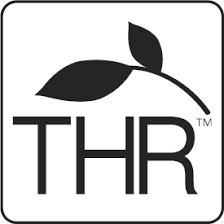A glossary of terms used throughout the website. Click on the term to read the definition.
An antimicrobial drug used to treat or prevent infections with bacteria. They do not work against viruses. Antibiotics either kill bacteria or they disrupt the bacteria's ability to multiply.
Germs develop methods to evade the drugs that are supposed to stop them. The germs then continue to grow. This is happening with all antimicrobial drugs - antibiotics, antivirals, antifungals and antiparastitics. The World Health Organisation (WHO) has declared that AMR is one of the top 10 global health threats facing humanity. Superbugs have emerged as a result of AMR. Fewer and fewer antibiotics now work against these superbugs. Inappropriate antibiotic use by all healthcare practitioners over many years has driven the development of AMR. Patients expecting antibiotics from healthcare professionals has contributed also.
Bacteria are found all over the world and in all our bodies. Bacteria consist of a single cell. They have an important role in breaking down dead plant and animal matter to help recycle nutrients. The human body contains millions of bacteria. Most of these bacteria live in the guts and on the skin and are harmless or even helpful to us. Some bacteria are harmful and can cause infections.
A commercial form of Pelargonium licensed under the Traditional Herbal Registration (THR) scheme. Centoreze is licensed in the UK by DePlantis.
Herbal medicines licensed under the THR can display this symbol.

A common viral infection of the upper respiratory tract. There are over 200 viruses known to cause a cold. Colds are more common in the winter and typically last between one and two weeks. Pelargonium may be effective in relieving the symptoms of the common cold. Find out more on our page about the common cold.
Members of a plant family, usually the Genus is the common name by which a plant is known eg. Pelargonium.
More information on plant names and classification can be found on this useful site.
Family of flowering plants better known as Geraniums including the genus Pelargonium.
More information on plant names and classification can be found on this useful site.
A commercial form of Pelargonium manufactured by Schwabe in Germany.
A species of the geranium Pelargonium.
A species of the geranium Pelargonium. The extract of the plant root is used in the manufacture of the herbal medicine Pelargonium.
Randomised Controlled Trial considered the gold standard study method to measure the clinical effectiveness of a treatment. RCTs should provide a true measure of the effect of a treatment compared to another or no treatment (placebo). Such a study design removes the effect of confounding factors among individual patients and bias. There is a good explanation of RCTs on the Cancer Research UK website
This defines an individual plant e.g. sidoides.
The first commercialised Pelargonium product in the UK, Umckaloabo by Charles Henry Stevens was often referred to as Stevens' Cure or Stevens' Consumption Cure.
Traditional Herbal Medicine. THMs are licensed based on a long-standing use as a traditional herbal remedy.
Traditional Herbal Registration. A scheme run by the Medicines and Healthcare products Regulation Agency (MHRA) in the UK to license Traditional herbal medicinal products.
The South African name for the geranium plant Pelargonium sidoides.
Sometimes abbreviated to URTi or RTI. The upper respiratory tract is the first part of the airways. It includes the nose, pharynx and larynx down to the trachea.
Viruses are microscopic agents that need cells of the host they infect to enable them to replicate. They either contain DNA or RNA. Most upper respiratory tract infections are caused by viruses.